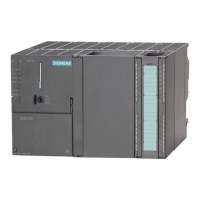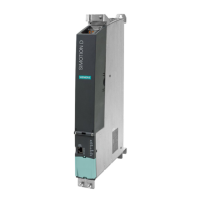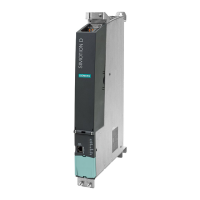Programming/homing path interpolation
5.1 Programming
TO Path Interpolation
Function Manual, 11/2010
135
● The _stop() command from an axis involved in the path motion or participating via the
path-synchronous motion does not stop the path motion on the path object, i.e. it has no
effect (this is the same behavior as for the synchronous motion on the Synchronous
technology object).
_stop() only stops motions that were initiated on the axis.
The _stopEmergency() command is also effective on motions initiated on the
Synchronous operation and Path object technology objects.
● Superimpositions can only take place on the axis (axis motion or synchronous operation),
not on the path object.
● If a positioning axis for path-synchronous motion of the path group is overridden by
means of an axis command on this axis, this has the same effect on the path as when a
path axis is overridden.
● Path axes and positioning axes for path-synchronous motion have the same response.
With the other settings, the path motion is started after the end of all previous axis motions or
an active path motion.
5.1.4.2 Sequence of effectiveness
Technology objects are processed in the sequence: Path object - Synchronous object - Axis
object. In the case of simultaneous motion commands on several technology objects that are
interconnected with an axis and have the same override response, the motion commands
take effect according to the processing order and the setting in the mergeMode parameter:
● When mergeMode:=IMMEDIATELY, the motion command on the axis takes effect (last
processed command).
● When mergeMode:=SEQUENTIAL/NEXT_MOTION, the motion command on the path
object takes effect (first effective command).
5.1.4.3 Interaction with the axis
If the motion of an axis is stopped as a result of its local alarm response or if the
interconnection of the path object to the axis becomes invalid, the path motion is canceled,
the other axes are also traversed with the maximum dynamic values to velocity 0.0, and a
technological alarm is issued.
If the remaining distance is smaller than the deceleration distance, the new target position is
overshot, and the axis travels back to the target position (with a reversing motion). The other
axes travel with their maximum dynamic values to velocity 0.0. However, these axes do not
travel back to the cancellation point. Depending on the general conditions (number of
participating axes, dynamic values), the path is no longer maintained.
See Motion Control Technology Objects Axis Electric/Hydraulic, External Encoder Function
Manual, "Motion transitions"
5.1.4.4 Interactions with other path motions
If a path axis is interconnected with several path objects, and if a path motion on a path axis
substitutes another path motion on another path object, the other path axes are traversed
with the maximum dynamic values to velocity 0.0, and a technological alarm is issued.

